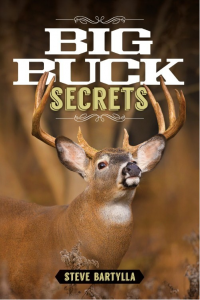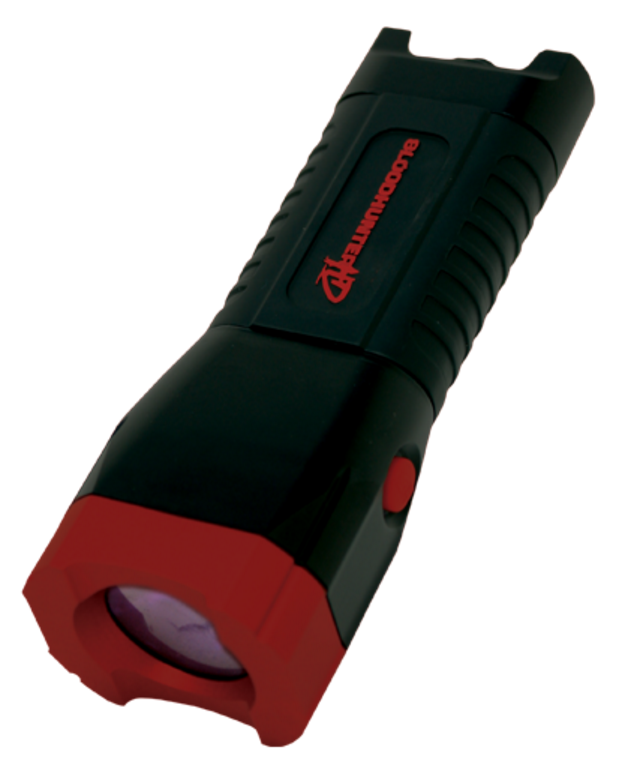There’s nothing worse than feeling the excitement of shooting a big deer turn to desperation when you lose the wounded animal’s track. More often than not, game is lost because of mistakes made during the excited moments after the shot. It’s important to understand that the hunt doesn’t end successfully when you pull the trigger, but rather when you recover the downed animal.
Nobody likes to admit they’ve lost game. It feels wasteful, and you bear the responsibility of sending an animal into the woods that is sick and injured because you failed to perform the most basic and fundamental action in all of all hunting — making the killing shot. Those terrible, sleepless hours after you lose a track are not the time to start thinking about the items you wish you’d had during the search. Instead, start planning ahead of time and keep these items in a “recovery bag” and keep it with you while you’re hunting so you have the equipment needed to help you recover lost deer.

Blood Tracking Light: In addition to my hands-free headlamp, I also carry a blood tracking light, the Primos Bloodhunter HD, in my recovery bag. With special lenses that help illuminate blood, this 600 lumen LED light helps the human eye pick up on minute droplets that might go unseen. Filtered lights such as the Bloodhunter HD are particularly helpful in tall grass where you’re looking for very small blood marks on thin stems. The Bloodhunter has two settings, high for tracking and low for travel, and battery life is from two to eight hours. MSRP for the Bloodhunter HD is $90.95. Visit: www.Primos.com
Hands-Free Light: You’ll need both of your hands to help cross fences, move limbs out of your way and tie reflective tape in places where you’ve found blood. Instead of carrying a heavy flashlight, use a headlamp that allows you to keep your hands free for other things. I prefer the Browning Night Seeker Pro ($22), which clips on the bill of a hat and is angled so that it illuminates the ground in front of me. There are white and green light options, and the durable clip also fastens to a shirt pocket as needed. This is also a great tool for field-dressing game. Visit: www.Browning.com
Reflective Tape: There should be a roll of this in every pack you carry hunting, so even if you can’t make it back to your recovery bag you will still have something to mark the deer’s blood trail. I keep a roll of reflective surveyor tape on hand at all times, particularly for those late-evening shots where every second is costing you additional light. Once I am out of my stand, I’ll immediately mark the last known location of the deer. This way I’ll know where to start tracking even if I head back to the truck and return in total darkness. Having a line of tape helps me find the blood trail when I lose it, and it shows me a direction of travel so I have an idea where the deer is headed.
Blood Illumination Spray: Anyone who has ever seen a crime drama on television has likely seen detectives use a chemical spray to identify the presence of blood. These sprays react with blood and change color, and they work as well for deer hunters as well as they do for homicide detec- tives. The BlueStar Hunting Kit contains a spray bottle and two packets of mix that allow you to make your own blood-indicating spray. These kits are lightweight and easy to mix in the field. Visit: www.Bluestar-Hunting.com

Thermal Imaging: Most hunters view thermal imaging cameras as a way to scout for game, but high-quality hand- held thermal imaging cameras such as the FLIR Scout can do so much more, including help you find lost game. Highly sensitive receptors in the Scout identify minute changes in temperature (there’s even video of a doe running into a tree and leaving her heat signature behind on the bark). Blood, carcasses, and sometimes even deer footprints, will show with the thermal imaging equipment, and thermal imaging equipment allows you to see invisible clues that are left behind as animals flee. And there’s nothing better to identify downed game in heavy brush. Visit: www.Flir.com
+++++
Learn How to Kill Big Bucks
 Solidly grounded in Bartylla’s wealth of experience, this buck hunting guide seeks to help real-world hunters take their craft to the next level. Chapters in his super book “Big Buck Secrets” include comprehensive instruction on everything from scouting new hunting areas – including public land, to calling strategies, hunting during the rut, understanding mature buck behavior, aggressive and creative techniques, and more – all aimed to help you bag the biggest buck of your life.
Solidly grounded in Bartylla’s wealth of experience, this buck hunting guide seeks to help real-world hunters take their craft to the next level. Chapters in his super book “Big Buck Secrets” include comprehensive instruction on everything from scouting new hunting areas – including public land, to calling strategies, hunting during the rut, understanding mature buck behavior, aggressive and creative techniques, and more – all aimed to help you bag the biggest buck of your life.

